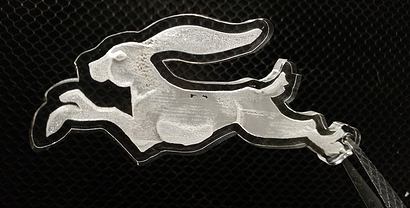You don’t know how much your generous efforts are appreciated @mpipes. You probably saved me a sheet or two of acrylic and a several frustrating hours getting to this point. Thanks man. ![]()
This is non-PG .23 acrylic (from Inventables I believe) set at 295/80 at .1 focus. It was my own hand-colored greyscale image and I’m really happy with the first effort.
Some of the lines in the engrave are from the blending of the image and not the GF. The weird line at the elbow and the blowout at the bottom of the foot was from a mis-start and those areas getting three passes, not two. I fixed some of the blending and made a few other adjustments and I’m cutting it again at 295/80/.07. (The GUI pic is of the 2nd attempt.)

